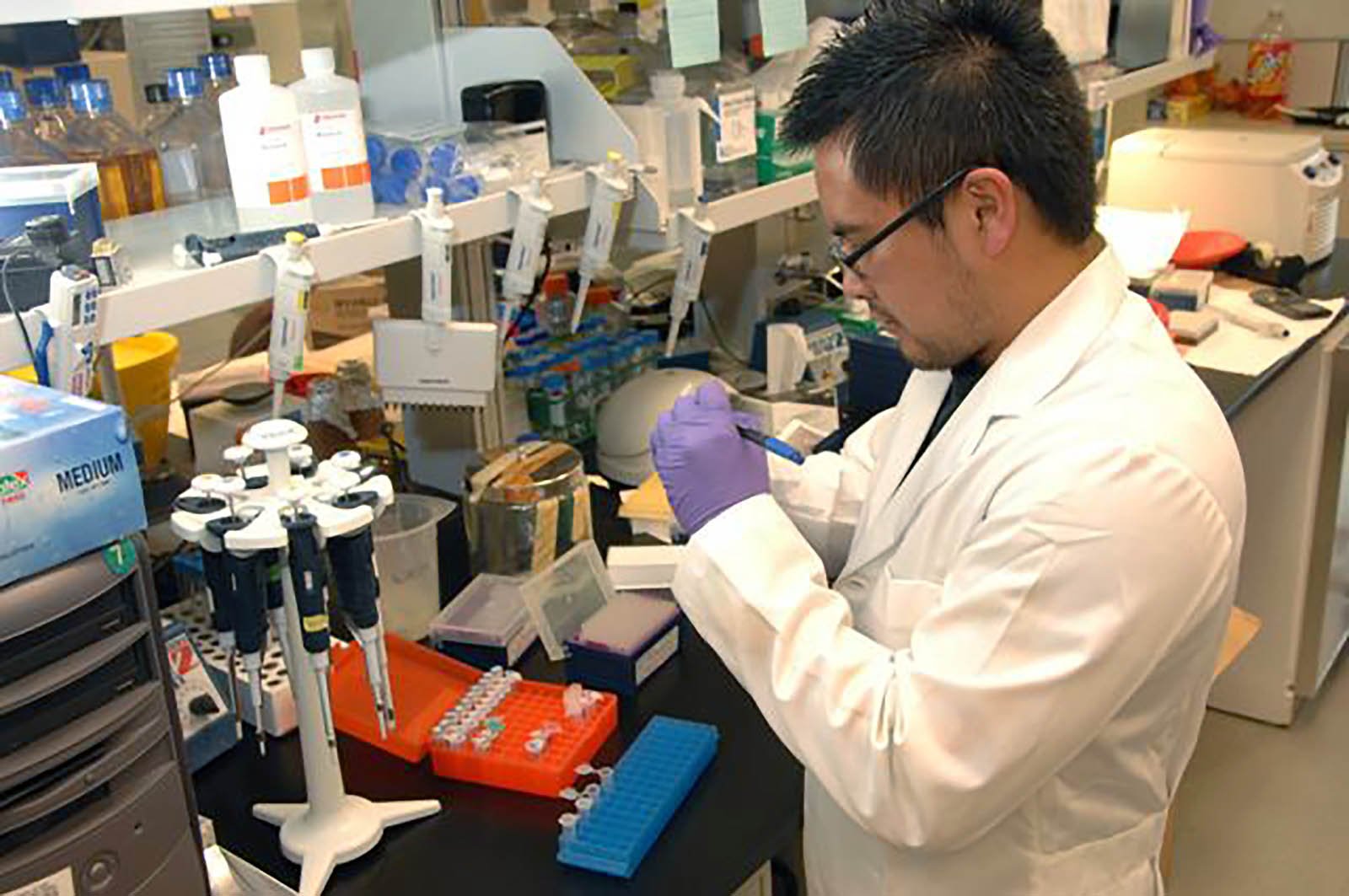AI Research
Artificial Intelligence’s Next Stop: New Consumer Hardware

A new wave of artificial intelligence centered around large models is spawning a batch of AI-native enterprises globally. This series of research defines AI-native enterprises as companies that, from their inception, take artificial intelligence as their core product, service, or capability, and drive value creation and business innovation with it. They are different from enterprises that only embed AI into existing businesses or use it as a tool. Tencent Research Institute focuses on over 100 AI-native enterprises globally and conducts a series of observations around three key questions: 1) What new technologies, product forms, and business models are AI-native enterprises spawning? 2) How can AI technology be deeply integrated into the application scenarios and core processes of various industries to empower industrial upgrading? 3) Along what path is the AI industrial ecosystem accelerating its evolution, and what structural changes will it bring?
Different from previous industrial analyses that mostly focused on the development of single-point technologies or the innovation of single enterprises, this series of research starts with the ecosystem. Currently, generative artificial intelligence is at a turning point from a tool to a platform. The openness, scalability, and synergy of the ecosystem have become the key variables determining the industrial landscape. Based on the review of the foundational models relied on by AI-native enterprises, this article preliminarily identifies three major ecological camps centered around OpenAI, Anthropic, and Google overseas. This selection is based on a comprehensive consideration of aspects such as the capabilities of the foundational models, developer attractiveness, ecosystem openness, and industrial influence. By revealing the aggregation trend and implementation scan of global AI enterprises, this article provides an observational perspective for China’s AI ecosystem construction.
I. Three Development Routes for AI Consumer Hardware
Since 2023, AI consumer hardware has shown a high degree of form innovation. New product categories such as AI phones, smart glasses, rings, headphones, and companion robots have emerged rapidly. Divided by the degree of AI nativeness, they can be roughly classified into three routes:
Route 1: Exploration Paradigm of AI-native Devices Represented by Rabbit
In the past two years, several AI-native devices have been launched one after another, trying to break out of the interaction paradigm dominated by smartphones and explore a new path of “intention equals operation”. They generally weaken apps, menus, and windows and rely on semantic understanding and task execution driven by large models. They are the prototypes of AI-native devices.
Typical representatives include the Rabbit R1 and the Humane AI Pin. The former features a physical screen and a scroll wheel for interaction, while the latter uses a screenless projection. Both need to rely on large models to understand instructions and complete operations. This paradigm also includes companion robots such as Loona and Ema, which are designed around voice interaction, emotion recognition, and anthropomorphic behavior to build a companionship relationship and an emotional connection.
Overall, products of this kind have paradigm innovation significance in terms of interaction paradigm and system structure, similar to the exploration of mobile devices with the early Palm OS. However, limited by multiple factors such as the maturity of the experience, stability, and user awareness, they still face extremely high uncertainties. For example, the AI Pin stopped all online functions on February 28, 2025. The Rabbit R1 is still on sale and being updated, but it faces multiple challenges such as a low active user rate, insufficient value, performance, and stability. The market prospect is still unclear.
Route 2: The Gradualists Represented by Apple in “Strengthening Native Devices”
Different from the exploration of AI-native devices starting from scratch, Apple, Meta, etc. represent another more stable technological evolution path: based on existing terminals, systematically introduce AI capabilities to achieve a gradual reconstruction of the devices.
Apple’s Apple Intelligence integrates local large models (supported by M-series chips) into its main products such as mobile phones, tablets, and computers. While taking into account security, performance, and ecosystem control, it gradually strengthens AI capabilities.
Not only mobile phones, but also wearable devices such as smart glasses and headphones are becoming the extension directions of this path. Meta’s Ray-Ban smart glasses, as well as the AI glasses products of Xiaomi and Huawei, all integrate model capabilities such as voice assistants, image Q&A, and translation navigation on the basis of the traditional form, expanding the boundaries of human-computer interaction. At the same time, as the most frequently used wearable devices, headphones are also accelerating the process of AIization. Brands such as Pixel Buds, AirPods, and Nothing have successively tried to introduce large model capabilities into the headphone end to achieve functions such as real-time conversation, information retrieval, and voice operation.
Overall, products of this kind are still based on the previous generation of hardware, but enhance the interaction experience by introducing AI capabilities and strengthen the AI attributes of the devices. This route is stable but does not completely subvert, and it is currently the route with the greatest potential for scale.
Route 3: The Empowerment Path Centered around the Model Represented by OpenAI
Large model manufacturers represented by OpenAI are exploring a platform-based path centered around the model to empower all things. For these model manufacturers, rather than building their own hardware, it is more important to inject powerful AI capabilities into third-party devices through interfaces such as APIs and SDKs, becoming the underlying support for the “general intelligence” of various devices.
This path has the advantages of high flexibility and rapid iteration and can quickly penetrate various terminal forms. For example, GPT-4o is embedded in hardware products such as Ray-Ban smart glasses and Be My Eyes, providing real-time conversation and visual perception capabilities; products such as Alibaba’s “Tongyi Tingwudao” headphones and Doubao headphones rely on their own models to explore daily interaction scenarios centered around voice assistants, creating an intelligent experience of “always awake and constantly responsive”.
The core of this route is not to reconstruct the hardware form or the operating system, but to make the model capabilities ubiquitous, that is, to connect every device and every interface to intelligence, and finally build an intelligent ecosystem where “the model is the platform”.
II. The Prototype of the AI Consumer Business Model Has Emerged
Along with the differentiation of product forms, the prototype of the AI consumer hardware business model has emerged. Through the dissection of current mainstream products, it is found that the three routes have each evolved a profit model that matches their technological paths and product positioning, and are accompanied by different core bottlenecks:

Table 1: Comparative Analysis of the Main Business Models of AI Consumer Hardware
1. AI-native Exploration School: A “Future Bet” on High-premium Hardware and Ecosystem Subscriptions
However, the AI-native exploration school is getting trapped in the dilemma of proving the value of hardware. In functional scenarios, the practicality and user experience of such products are currently difficult to match those of mature hardware such as mobile phones, and no rigid-demand scenarios that cannot be replaced by existing hardware have been discovered, resulting in a continuously low user purchase rate. A typical representative is the Rabbit R1. This product entered the market with a price of $199 and a retro design and can achieve instant response and voice interaction. However, limited by cloud dependence, a closed ecosystem, and logical loopholes, it has problems such as unstable functions and poor control experience. “Most functions have no advantage compared with smartphones”, and it has ultimately failed to break through the boundary of a “scenario toy”. In addition, evaluation media has pointed out potential privacy risks and questioned that its self-developed LAM model only uses automated scripts to operate applications. Now, Rabbit has turned to the software development ecosystem to save itself.
In the companionship scenario, the emotional premium cannot cover the functional defects and is also difficult to support the high hardware premium. Take the LOVOT companion robot launched by Japan’s GROOVE X company as an example. Its business model of a $3,935 hardware price plus a $67 monthly subscription fee targets high-net-worth individuals. The exclusive clothing for the built-in chip costs hundreds to thousands of dollars per piece, and ordinary clothes cannot trigger interactive feedback, forming a forced consumption closed loop. However, its interaction battery life is less than 1 hour and it needs frequent recharging. The interaction gameplay is fixed, and no personalized interaction cases (no language ability) have been seen. After five years of release, the global sales volume is only 14,000 units, with an average annual shipment of less than 3,000 units.
The core dilemma of the exploration school’s AI consumer hardware is that the user education cost is high. If the product experience cannot achieve a breakthrough far beyond that of existing terminals, it will be difficult to win mainstream users. Currently, such products generally lack sufficient subversiveness, resulting in an unclear value chain between hardware pricing and subscription services, making it difficult to drive users to pay continuously and maintain stickiness. Ultimately, this is a high-risk “big bet” on the future transformation of the human-computer interaction paradigm.
2. Gradual Strengthening School: Realize Profits in Familiarity and Create Compound Interest in Subscriptions
This model is based on a mature hardware form and significantly improves the original function experience or creates new application scenarios by systematically integrating AI capabilities. Its business model takes hardware sales as the main source of income and seizes market share by relying on brand power or cost-effectiveness. More importantly, by providing value-added service subscriptions (such as personalized in-depth health analysis reports, professional translation engines, and continuously iterated exclusive AI functions), enterprises transform a one-time hardware purchase into long-term user value and a continuous revenue stream, unlocking deeper “intelligent” value.
The core advantage lies in a low user cognitive threshold and high market acceptance. In terms of product experience, the gradualist school emphasizes the optimization of local AI computing power. Apple’s end-side model uses a dual-block architecture. While reducing memory and response latency, it introduces a cloud-based PT-MoE model to ensure a balance between efficiency and intelligence level. According to a US survey in September 2024, Apple Intelligence has increased consumers’ willingness to pay by 11% and has become the core decision-making factor for 54% of potential mobile phone replacement users. The subscription system and end-side AI capabilities together constitute a double-engine of competitiveness. The former activates long-term value, and the latter ensures response speed and privacy security.
However, there are still challenges in the implementation of the subscription system: users often lack the willingness to pay for pseudo (shallow) AI functions that “seem intelligent but are difficult to provide real value”, especially in the absence of rigid-demand scenario support, it is difficult to stably increase the renewal rate. At the same time, hardware products are becoming increasingly homogeneous, and the differentiation path depends on deeper AI capabilities and ecosystem synergy.
Taking the health monitoring track as an example, Oura Ring once caused user resistance with its model of “$499 hardware + $5.99 monthly fee to unlock basic data”, especially the lack of real-time health warning functions weakened its value. However, after switching to the model of “free basic data + subscription for in-depth health services”, users’ willingness to pay for intelligent reports such as personalized sleep analysis and disease risk prediction has significantly increased, driving the subscription conversion rate to increase by 18%. This case shows that the key is not whether to charge, but to let users feel the continuous and perceptible value of intelligent services.
In the future, the key to the success of the subscription system lies in two points: one is to anchor high-frequency user scenarios and provide an intelligent assistant experience close to life; the other is to build a hierarchical subscription system, lower the initial payment threshold, and improve the psychological acceptance of renewal and the cost-effectiveness of services.
3. Model Empowerment School: Partially Replicating the Android Path
Large model manufacturers represented by OpenAI and Google have chosen a path of not building their own closed hardware loop but focusing on building the most powerful basic AI models. Their business model can be regarded as a “partial replication” of the Android path: on the one hand, through API/SDK interfaces, they output model capabilities like “water, electricity, and gas” and charge developers, enterprise customers, and manufacturers who want to inject intelligence into their hardware products according to the call volume (such as Token consumption or the number of requests). On the other hand, they achieve high-value-added commercial realization by providing enterprise-level subscriptions, private deployments, security customization, and other services.
The core advantage of this model is that it does not rely on a single hardware form, has stronger penetration and risk dispersion capabilities, and can theoretically be embedded in all terminal devices with computing capabilities. However, compared with the Android ecosystem’s path of “pre-installation + unified standards + low marginal cost”, the model empowerment school faces challenges in several key links:
First, the model inference cost is relatively high, and it is difficult to authorize on a large scale at an extremely low cost like the Android system;
Second, there are technical thresholds for the adaptation of model capabilities and terminals. Especially on the resource-constrained local end, there are often experience shortcomings such as high latency and function shrinkage;
Third, the platform control power of the empowerment path has not been established. Currently, there is a lack of unified ecological standards and distribution channels, and the voice of model manufacturers on the user side is easily isolated or replaced by hardware manufacturers.
This dilemma is beginning to show in the cooperation between leading manufacturers: Samsung has self-developed the Gauss AI model to reduce external dependence in order to master the intelligent leadership. Vivo has strengthened its data closed loop and local control ability by self-developing the Blue Heart large model and reduced its dependence on third-party APIs in core areas. Even Google has had to pay a high licensing fee to Samsung and cede part of the subscription revenue in order to get Gemini AI pre-installed on the Galaxy S25.
Although the model empowerment school accelerates the construction of the developer ecosystem through open source and tries to create implementation standards, if there is a lack of unified interfaces and low-cost inference capabilities, its platform status will be difficult to truly stabilize. Compared with the platform ability of the Android operating system as a super entrance, the model empowerment school is more like the water, electricity, and gas of basic services, with strong penetration but weak control.
Therefore, its future core competitiveness will not only lie in the leading ability of the model itself but also in whether it can establish a stable, efficient, and low-cost adaptation path, build a double moat of technology and ecosystem, and master the entrance leadership in the trend of software-hardware integration.
The above three models are not completely separated, and hybrid models are emerging. For example, more and more new AI hardware realizes functional linkage with existing devices such as mobile phones through Bluetooth and apps, constructing a multi-terminal system experience. At the same time, many model manufacturers have begun to build their own AI-native hardware, connecting the complete link from model capabilities to terminal products.
III. Outlook on the Trends of AI Consumer Hardware
1. Implementation Method: Continuous Integration of the Upstream and Downstream, and the Combination of the End and the Cloud Remains the Mainstream
Model manufacturers are actively exploring the adaptability of models and hardware, and the connection between the upstream and downstream of the industrial chain has become closer. Since the operating efficiency of the model is deeply bound to the underlying chip hardware, in order to match the model performance with the hardware end, model manufacturers are actively cooperating with chip giants to ensure that their models can perform the best on various devices. For example, since the release of Llama 3, Meta has closely cooperated with many hardware partners. The announcement named Qualcomm, Intel, Nvidia, as well as AMD, AWS, Dell, etc., to ensure that the model can be optimized and supported on these platforms; in subsequent releases, Meta strengthened its cooperation with end-side chip manufacturers, especially the adaptation with Qualcomm’s Snapdragon chips, to promote the efficient operation of the smaller-parameter Llama 3 model on mobile devices such as mobile phones. This strategy ensures that various devices from mobile phones to data centers can become ideal operating platforms for Llama 3; similarly, Alibaba is also actively promoting the adaptation of its Tongyi Qianwen large model with hardware manufacturers and is committed to building a complete ecosystem from the model to the chip to accelerate the implementation and application of its AI technology in different industries.
In addition, more and more model manufacturers are choosing to design and manufacture AI-native hardware themselves. For example, OpenAI, ByteDance, Alibaba, etc., are all using their own models to build hardware. The ultimate goal of these manufacturers is to create an ideal container and user entrance that can perfectly carry their AI services and define
AI Research
Dogs and drones join forest battle against eight-toothed beetle

Esme Stallard and Justin RowlattClimate and science team
 Sean Gallup/Getty Images
Sean Gallup/Getty ImagesIt is smaller than your fingernail, but this hairy beetle is one of the biggest single threats to the UK’s forests.
The bark beetle has been the scourge of Europe, killing millions of spruce trees, yet the government thought it could halt its spread to the UK by checking imported wood products at ports.
But this was not their entry route of choice – they were being carried on winds straight over the English Channel.
Now, UK government scientists have been fighting back, with an unusual arsenal including sniffer dogs, drones and nuclear waste models.
They claim the UK has eradicated the beetle from at risk areas in the east and south east. But climate change could make the job even harder in the future.
The spruce bark beetle, or Ips typographus, has been munching its way through the conifer trees of Europe for decades, leaving behind a trail of destruction.
The beetles rear and feed their young under the bark of spruce trees in complex webs of interweaving tunnels called galleries.
When trees are infested with a few thousand beetles they can cope, using resin to flush the beetles out.
But for a stressed tree its natural defences are reduced and the beetles start to multiply.
“Their populations can build to a point where they can overcome the tree defences – there are millions, billions of beetles,” explained Dr Max Blake, head of tree health at the UK government-funded Forestry Research.
“There are so many the tree cannot deal with them, particularly when it is dry, they don’t have the resin pressure to flush the galleries.”
Since the beetle took hold in Norway over a decade ago it has been able to wipe out 100 million cubic metres of spruce, according to Rothamsted Research.
‘Public enemy number one’
As Sitka spruce is the main tree used for timber in the UK, Dr Blake and his colleagues watched developments on continental Europe with some serious concern.
“We have 725,000 hectares of spruce alone, if this beetle was allowed to get hold of that, the destructive potential means a vast amount of that is at risk,” said Andrea Deol at Forestry Research. “We valued it – and it’s a partial valuation at £2.9bn per year in Great Britain.”
There are more than 1,400 pests and diseases on the government’s plant health risk register, but Ips has been labelled “public enemy number one”.
The number of those diseases has been accelerating, according to Nick Phillips at charity The Woodland Trust.
“Predominantly, the reason for that is global trade, we’re importing wood products, trees for planting, which does sometimes bring ‘hitchhikers’ in terms of pests and disease,” he said.
Forestry Research had been working with border control for years to check such products for Ips, but in 2018 made a shocking discovery in a wood in Kent.
“We found a breeding population that had been there for a few years,” explained Ms Deol.
“Later we started to pick up larger volumes of beetles in [our] traps which seemed to suggest they were arriving by other means. All of the research we have done now has indicated they are being blown over from the continent on the wind,” she added.
 Daegan Inward/Forestry Research
Daegan Inward/Forestry ResearchThe team knew they had to act quickly and has been deploying a mixture of techniques that wouldn’t look out of place in a military operation.
Drones are sent up to survey hundreds of hectares of forest, looking for signs of infestation from the sky – as the beetle takes hold, the upper canopy of the tree cannot be fed nutrients and water, and begins to die off.
But next is the painstaking work of entomologists going on foot to inspect the trees themselves.
“They are looking for a needle in a haystack, sometimes looking for single beetles – to get hold of the pioneer species before they are allowed to establish,” Andrea Deol said.
In a single year her team have inspected 4,500 hectares of spruce on the public estate – just shy of 7,000 football pitches.
Such physically-demanding work is difficult to sustain and the team has been looking for some assistance from the natural and tech world alike.
 Tony Jolliffe/BBC
Tony Jolliffe/BBCWhen the pioneer Spruce bark beetles find a suitable host tree they release pheromones – chemical signals to attract fellow beetles and establish a colony.
But it is this strong smell, as well as the smell associated with their insect poo – frass – that makes them ideal to be found by sniffer dogs.
Early trials so far have been successful. The dogs are particularly useful for inspecting large timber stacks which can be difficult to inspect visually.
The team is also deploying cameras on their bug traps, which are now able to scan daily for the beetles and identify them in real time.
“We have [created] our own algorithm to identify the insects. We have taken about 20,000 images of Ips, other beetles and debris, which have been formally identified by entomologists, and fed it into the model,” said Dr Blake.
Some of the traps can be in difficult to access areas and previously had only been checked every week by entomologists working on the ground.
The result of this work means that the UK has been confirmed as the first country to have eradicated Ips Typographus in its controlled areas, deemed to be at risk from infestation, and which covers the south east and east England.
“What we are doing is having a positive impact and it is vital that we continue to maintain that effort, if we let our guard down we know we have got those incursion risks year on year,” said Ms Deol.
 Tony Jolliffe/BBC
Tony Jolliffe/BBCAnd those risks are rising. Europe has seen populations of Ips increase as they take advantage of trees stressed by the changing climate.
Europe is experiencing more extreme rainfall in winter and milder temperatures meaning there is less freezing, leaving the trees in waterlogged conditions.
This coupled with drier summers leaves them stressed and susceptible to falling in stormy weather, and this is when Ips can take hold.
With larger populations in Europe the risk of Ips colonies being carried to the UK goes up.
The team at Forestry Research has been working hard to accurately predict when these incursions may occur.
“We have been doing modelling with colleagues at the University of Cambridge and the Met Office which have adapted a nuclear atmospheric dispersion model to Ips,” explained Dr Blake. “So, [the model] was originally used to look at nuclear fallout and where the winds take it, instead we are using the model to look at how far Ips goes.”
Nick Phillips at The Woodland Trust is strongly supportive of the government’s work but worries about the loss of ancient woodland – the oldest and most biologically-rich areas of forest.
Commercial spruce have long been planted next to such woods, and every time a tree hosting spruce beetle is found, it and neighbouring, sometimes ancient trees, have to be removed.
“We really want the government to maintain as much of the trees as they can, particularly the ones that aren’t affected, and then also when the trees are removed, supporting landowners to take steps to restore what’s there,” he said. “So that they’re given grants, for example, to be able to recover the woodland sites.”
The government has increased funding for woodlands in recent years but this has been focused on planting new trees.
“If we only have funding and support for the first few years of a tree’s life, but not for those woodlands that are 100 or century years old, then we’re not going to be able to deliver nature recovery and capture carbon,” he said.
Additional reporting Miho Tanaka

AI Research
AI replaces excuses for innovation, not jobs
AI isn’t here to replace jobs, it’s here to eliminate outdated practices and empower entrepreneurs to innovate faster and smarter than ever before.

AI Research
AI clamps down on fake science journals

Medical Laboratory Scientist at bench with micropipettes. —
Courtesy U.S. National Institutes of Health (Public Domain)
By deploying a specially configured artificial intelligence, researchers at the University of Colorado Boulder have exposed ‘predatory’ scientific journals—those that trick scientists into paying for publication without proper peer review.
This was achieved by analyzing journal websites for AI-learned red flags like fake editorial boards, excessive self-citation, and sloppy errors. Through these pre-sets. the AI flagged over 1,400 suspicious titles out of 15,200 assessed.
The new AI tool automatically screens scientific journals, evaluating their websites and other online data for certain criteria: Do the journals have an editorial board featuring established researchers? Do their websites contain a lot of grammatical errors?
Many scientists, including this author, receive messages to our email inboxes. These spam messages come from people who purport to be editors at scientific journals, usually ones Acuña has never heard of, and offer to publish his papers — for a hefty fee.
The types of publications are sometimes referred to as “predatory” journals, since they target scientists, convincing them to pay hundreds or even thousands of dollars to publish their research without proper vetting.
Some organisations have long campaigned against such publications. For instance, the Directory of Open Access Journals (DOAJ). Since 2003, volunteers at the DOAJ have flagged thousands of journals as suspicious based on six criteria. (Reputable publications, for example, tend to include a detailed description of their peer review policies on their websites.)
Why does this matter?
In an era when prominent figures (notably Donald Trump) are questioning the legitimacy of science, stopping the spread of questionable publications has become more important than ever before.
Legitimate science
When scientists submit a new study to a reputable publication, that study usually undergoes a practice called peer review. In other words, outside experts read the study and evaluate it for quality.
AI model
The new AI system is not yet publicly accessible; however, the researchers hope to make it available to universities and publishing companies soon.
The application of the AI model appears in the journal Science Advances, titled “Estimating the predictability of questionable open-access journals.”
-
Tools & Platforms3 weeks ago
Building Trust in Military AI Starts with Opening the Black Box – War on the Rocks
-

 Ethics & Policy1 month ago
Ethics & Policy1 month agoSDAIA Supports Saudi Arabia’s Leadership in Shaping Global AI Ethics, Policy, and Research – وكالة الأنباء السعودية
-

 Events & Conferences3 months ago
Events & Conferences3 months agoJourney to 1000 models: Scaling Instagram’s recommendation system
-

 Jobs & Careers2 months ago
Jobs & Careers2 months agoMumbai-based Perplexity Alternative Has 60k+ Users Without Funding
-

 Business1 day ago
Business1 day agoThe Guardian view on Trump and the Fed: independence is no substitute for accountability | Editorial
-

 Funding & Business2 months ago
Funding & Business2 months agoKayak and Expedia race to build AI travel agents that turn social posts into itineraries
-

 Education2 months ago
Education2 months agoVEX Robotics launches AI-powered classroom robotics system
-

 Podcasts & Talks2 months ago
Podcasts & Talks2 months agoHappy 4th of July! 🎆 Made with Veo 3 in Gemini
-

 Podcasts & Talks2 months ago
Podcasts & Talks2 months agoOpenAI 🤝 @teamganassi
-

 Jobs & Careers2 months ago
Jobs & Careers2 months agoAstrophel Aerospace Raises ₹6.84 Crore to Build Reusable Launch Vehicle






















